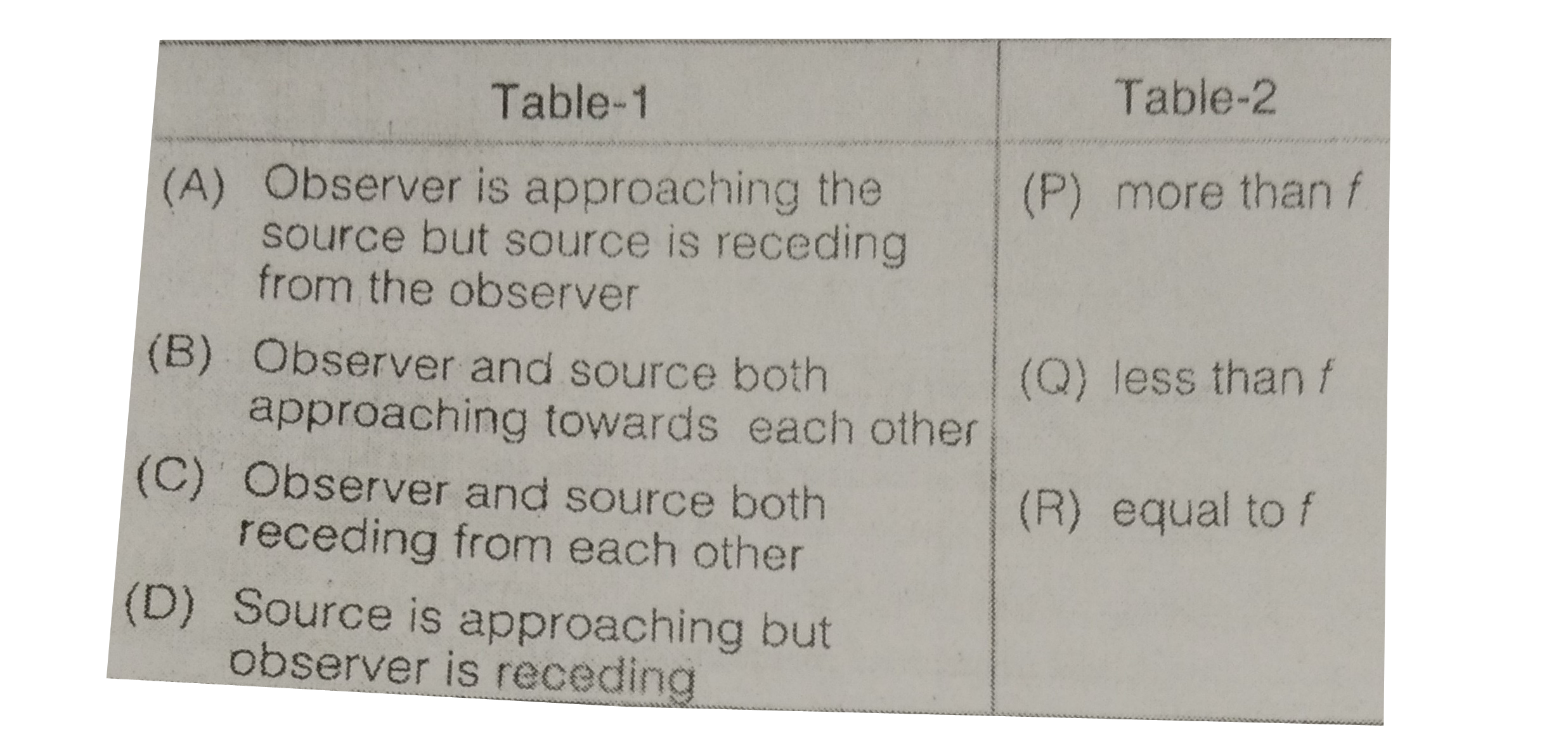S1: Source and observer both are stationary and wind is blowing in a direction from source to observer then observer detects an apparent increase in frequency.
S2: Beat frequency is defined as the difference of frequency of two sources.
S3: Pressure node is always a displacement node and pressure antinode is always a displacement antinode.
If both assertion and reason are true and reason is the correct explanation of assertion.
If both assertion and reason are true but reason is not the correct explanation of assertion.
If assertion is true but reason is false.
If both assertion and reason are false.
The correct Answer is:B
At the point where a compression and a rarefaction meet, the displacement is minimum and it is called displacement node. At this point, the pressure difference is maximum, that is at same time, it is a pressure antinode. On the other hand, at the mid-point of a compression or a rarefaction, the displacement variation is maximum. Such a point is displacement antinode. However such a point is pressure node, as pressure variation is minimum at such a point.
Topper's Solved these Questions
- BOOK - NCERT FINGERTPS ENGLISHCHAPTER - WAVESEXERCISE - Introduction2videos
WAVES
- BOOK - NCERT FINGERTPS ENGLISHCHAPTER - WAVESEXERCISE - Transverse And Longitudinal Waves5videos
WAVES
- BOOK - NCERT FINGERTPS ENGLISHCHAPTER - WAVESEXERCISE - EXEMPLER10videos
WAVES
- BOOK - NCERT FINGERTPS ENGLISHCHAPTER - UNITS AND MEASUREMENTSEXERCISE - Assertion And Reason15videos
UNITS AND MEASUREMENTS
- BOOK - NCERT FINGERTPS ENGLISHCHAPTER - WORK , ENERGY AND POWEREXERCISE - Assertion And Reason15videos
WORK , ENERGY AND POWER
Similar Questions
Knowledge Check
- Question 1 - Select One
A sound source is moving towards a stationary observer with 1/10 of the speed of sound. The ratio of apparent to real frequency is
A109B(109)2C(1110)2D1110 - Question 2 - Select One
An observer moves towards a stationary source of sound. The percentage change in the apparent frequency is
AzeroB0.05C0.1D0.2
(A): When an observer moves towards a stationary source, the frequency of sound heard is greater than the actual frequency
(R) : Apparent frequency increases because the observer intercepts more number of waves when he moves towards the source.View SolutionAn observer moves towards a stationary source of sound with a velocity one-fifth of the velocity of sound. What is the percentage increase in the apparent frequency?
View Solutionsource and observer both start moving simultaneously from origion one along y - axis with speed of source = 2 (speed of observer ). The graph between the apparent frequency observed by observer (f) and time (t) would be
View Solutionif the speed of a sound source is equal to the speed fo sound and the source is moving away from the observer, then the ratio of apparent frequency to the original frequency is
View SolutionA sound source has frequency f. Source and observer both have same speed.For the apparent frequency observed by observer match the following.
 View Solution
View Solution(A) : When a source moves towards a stationary observer, the speed of source relative to the observer remains unchanged.
(R): The apparent change in frequency is due to change in the wavelength brought by the motion of the source.View Solution

